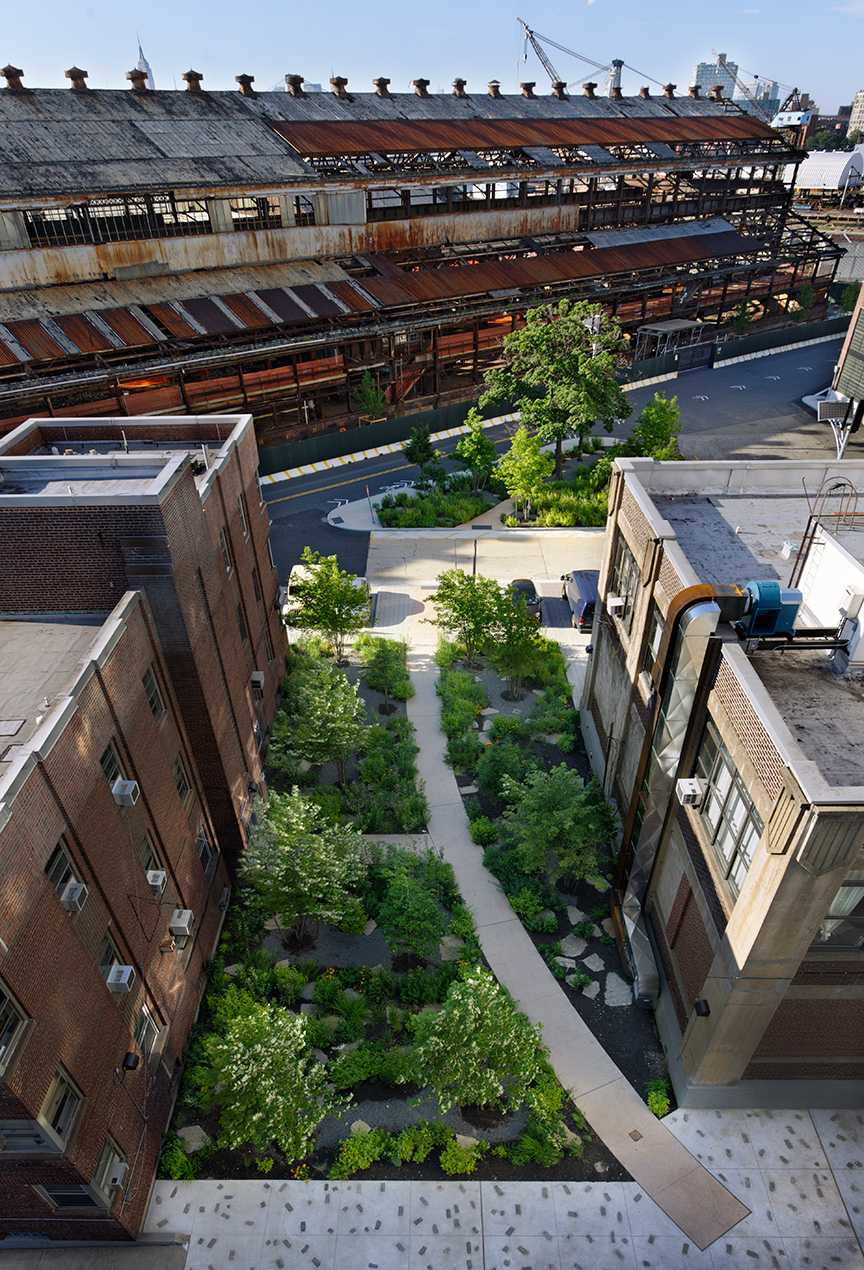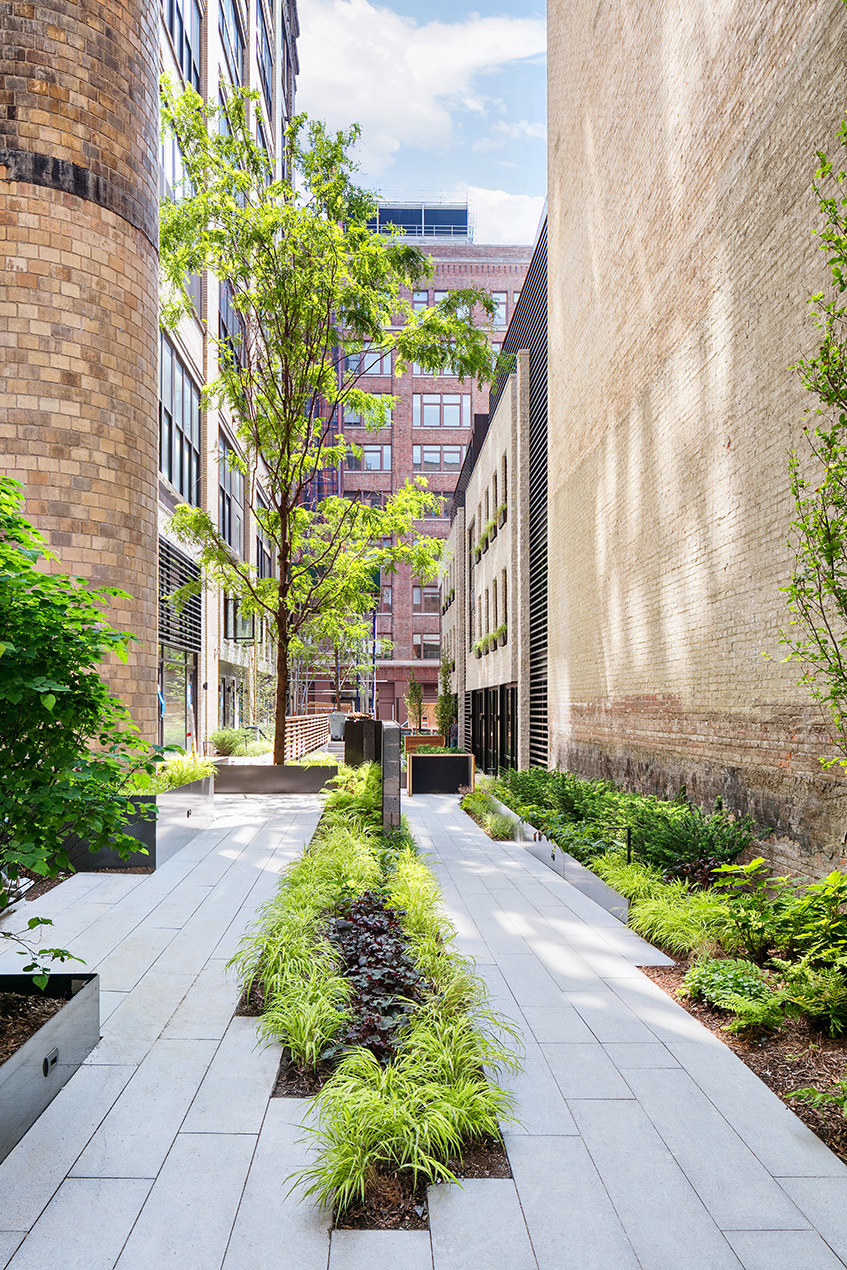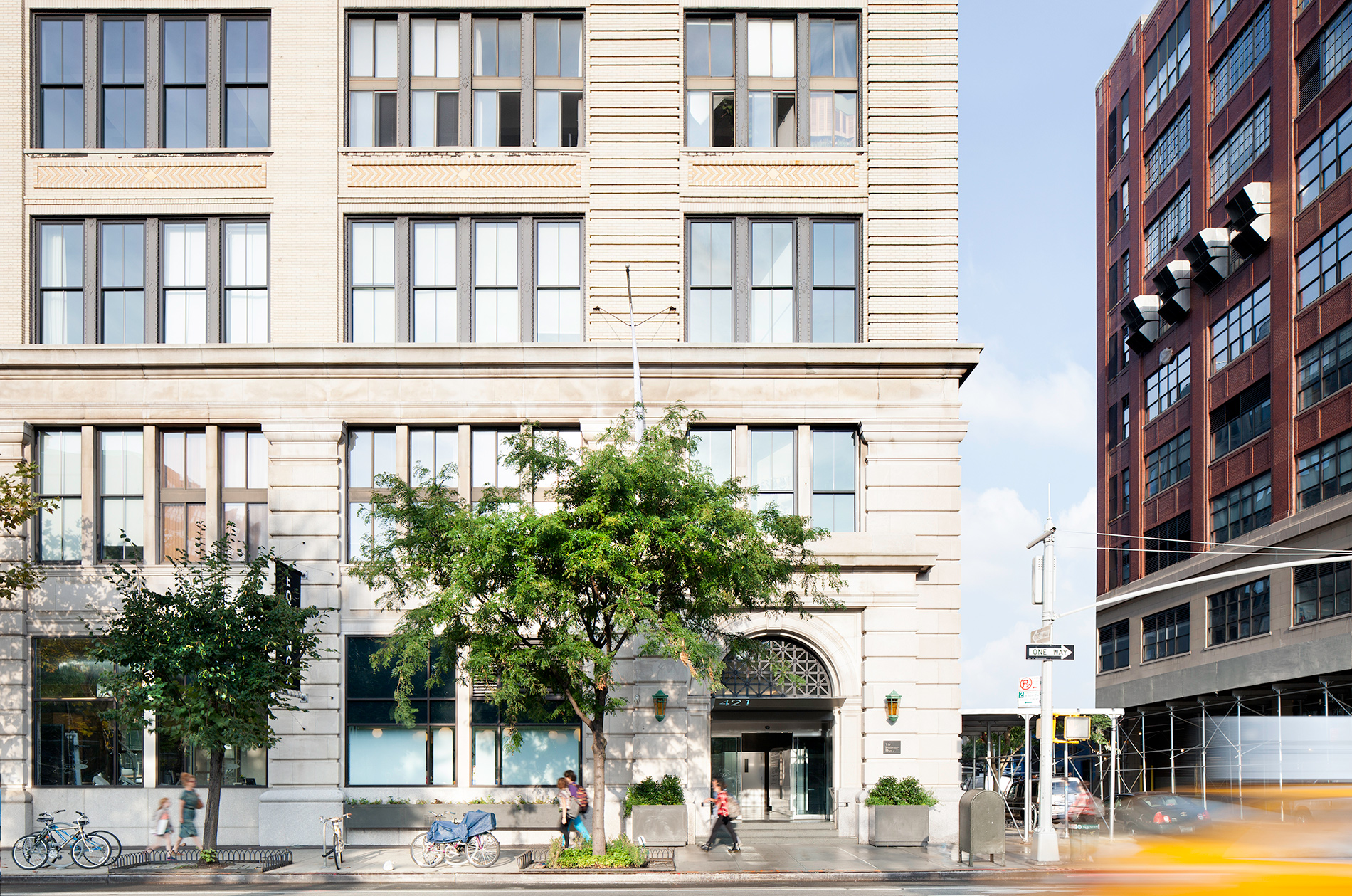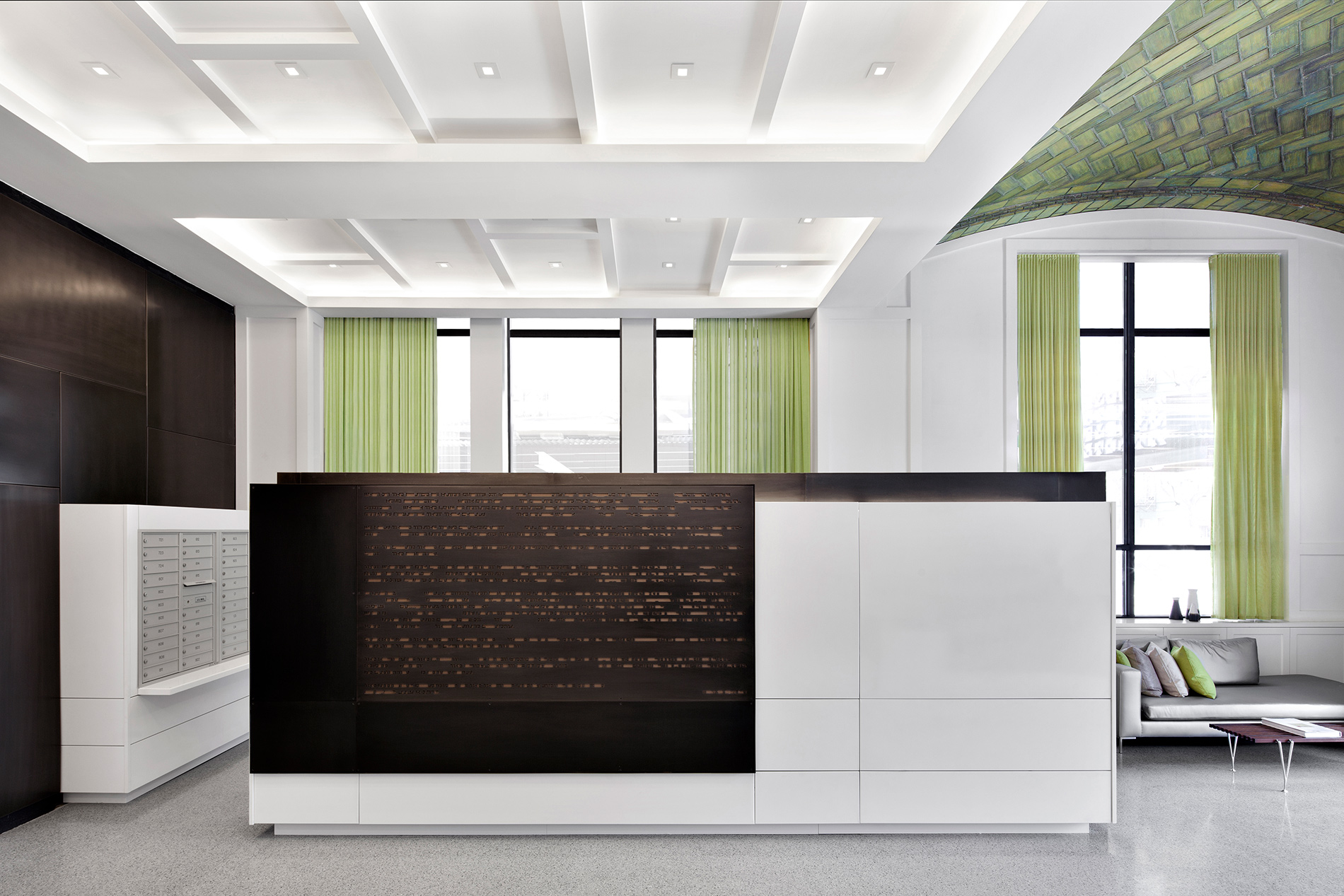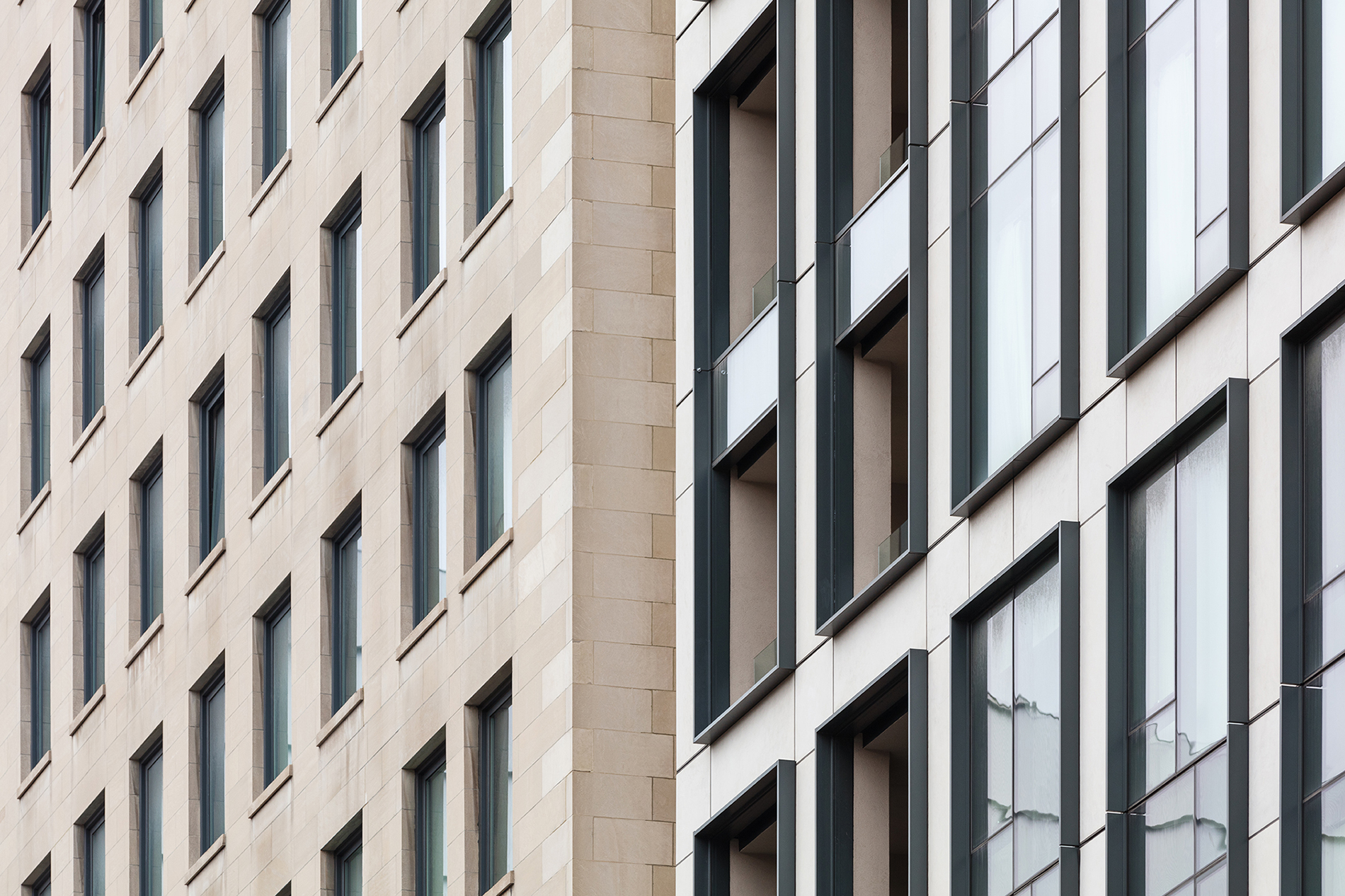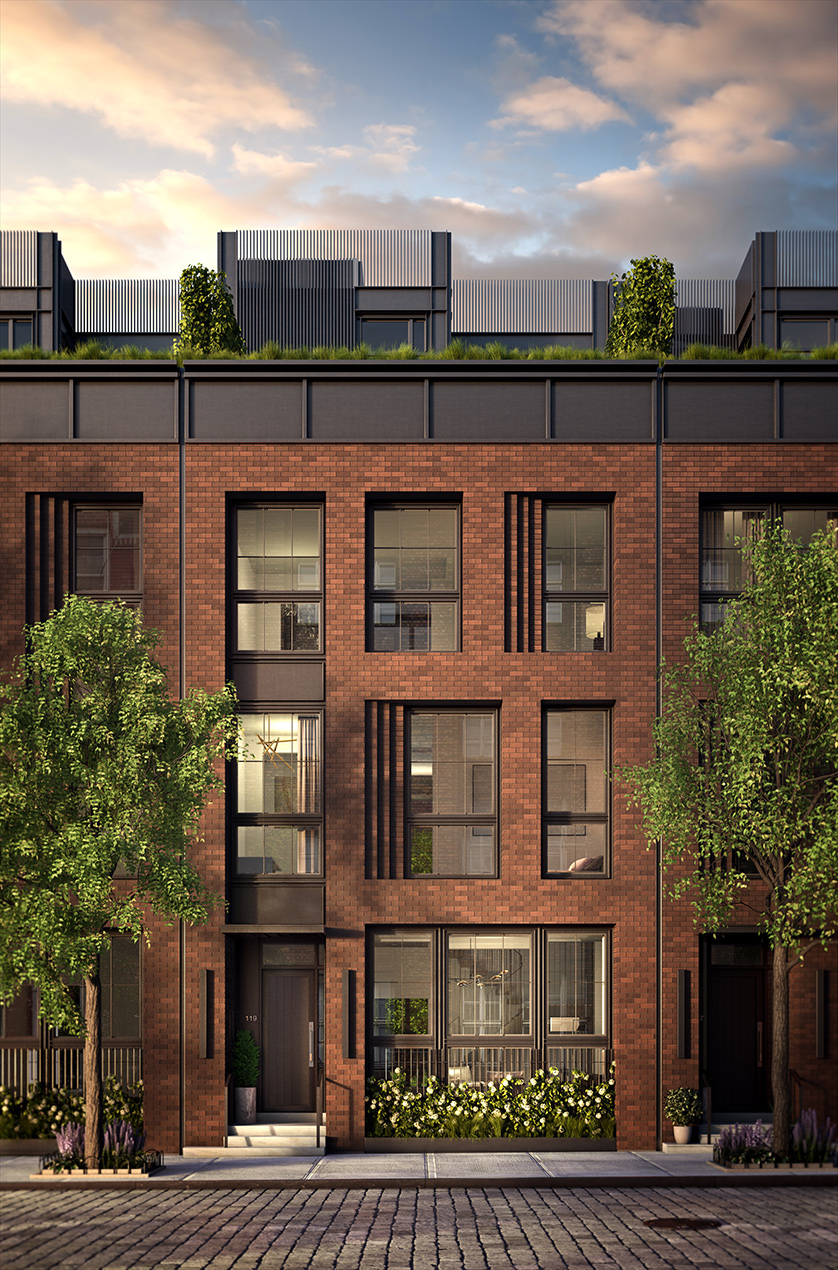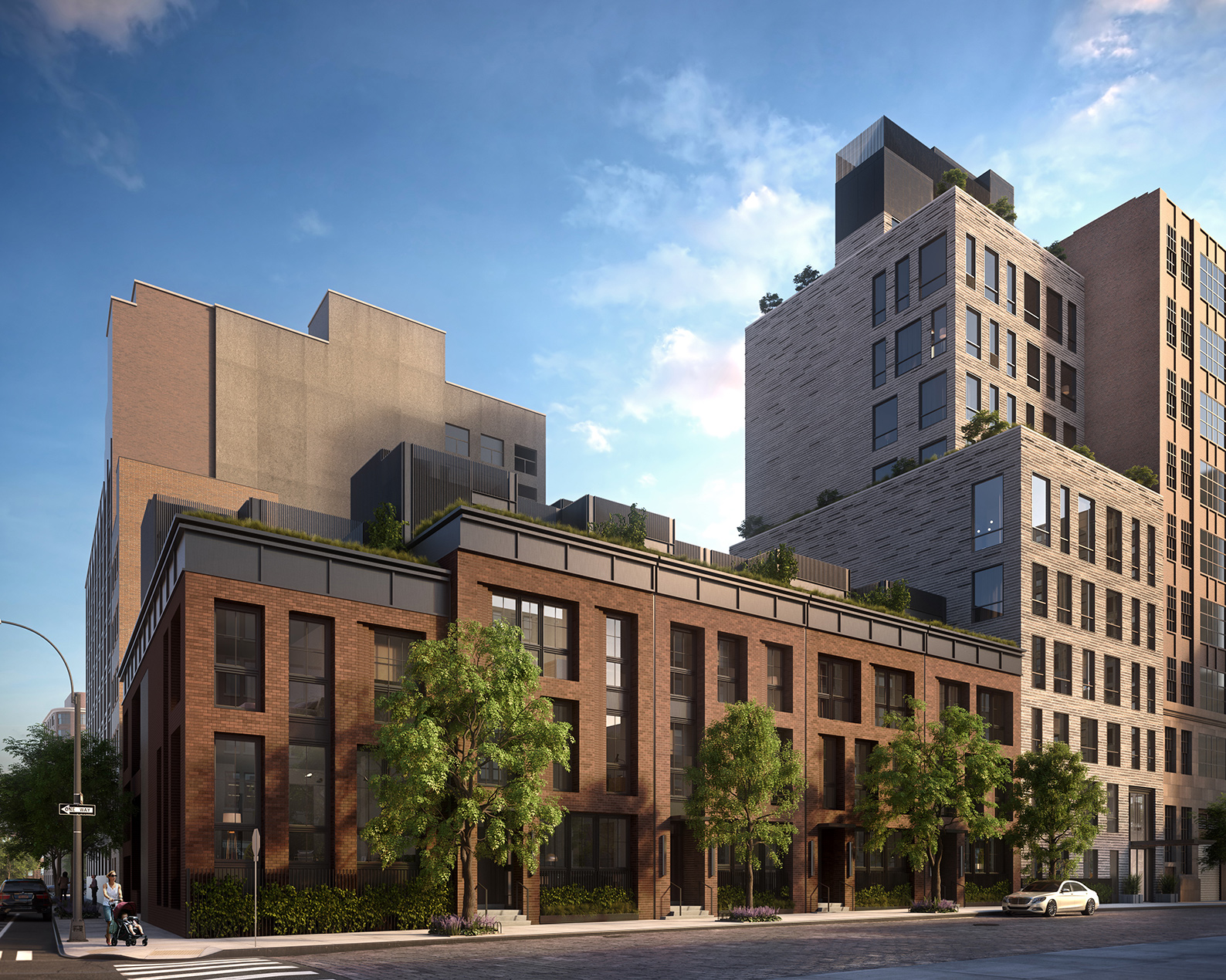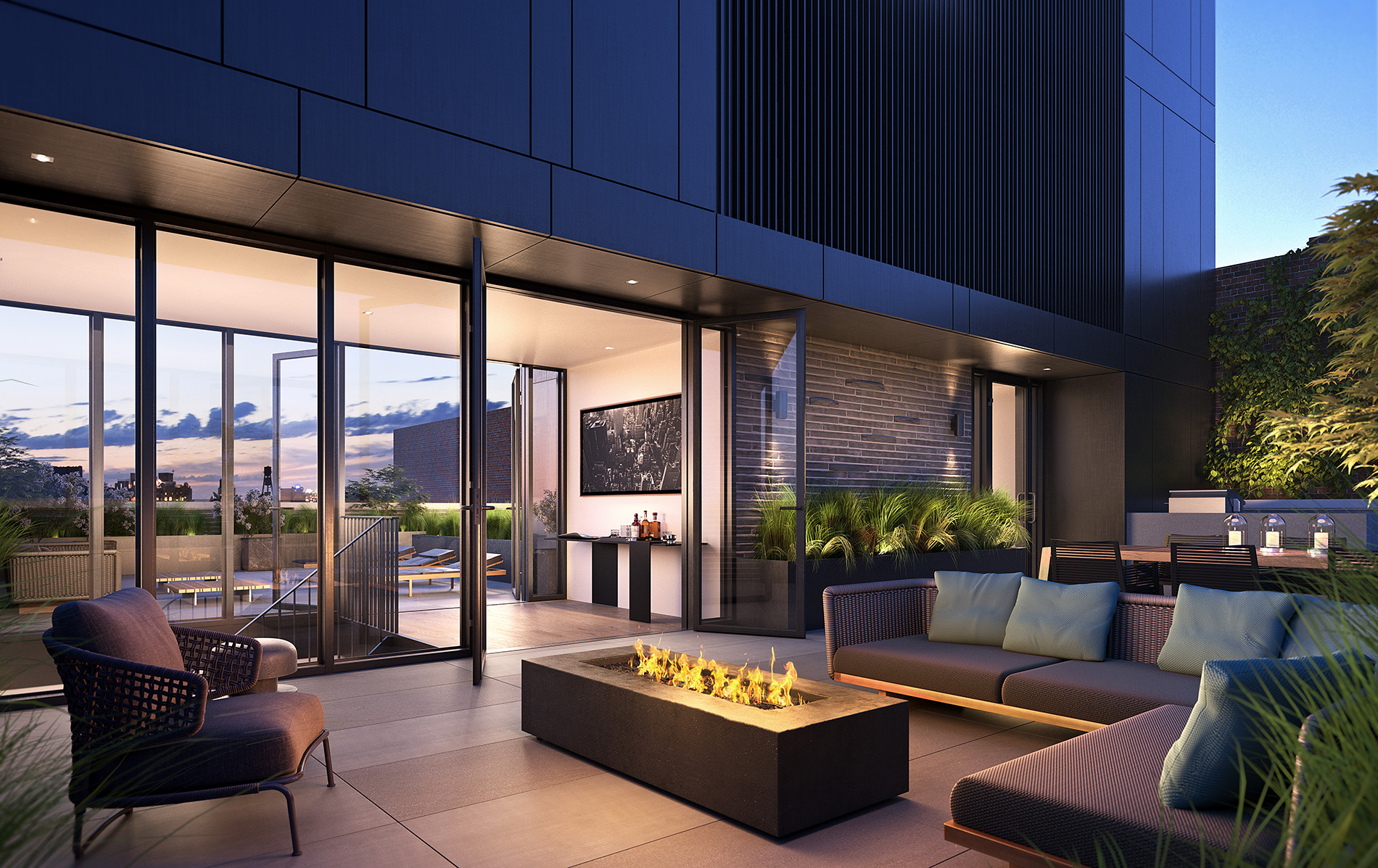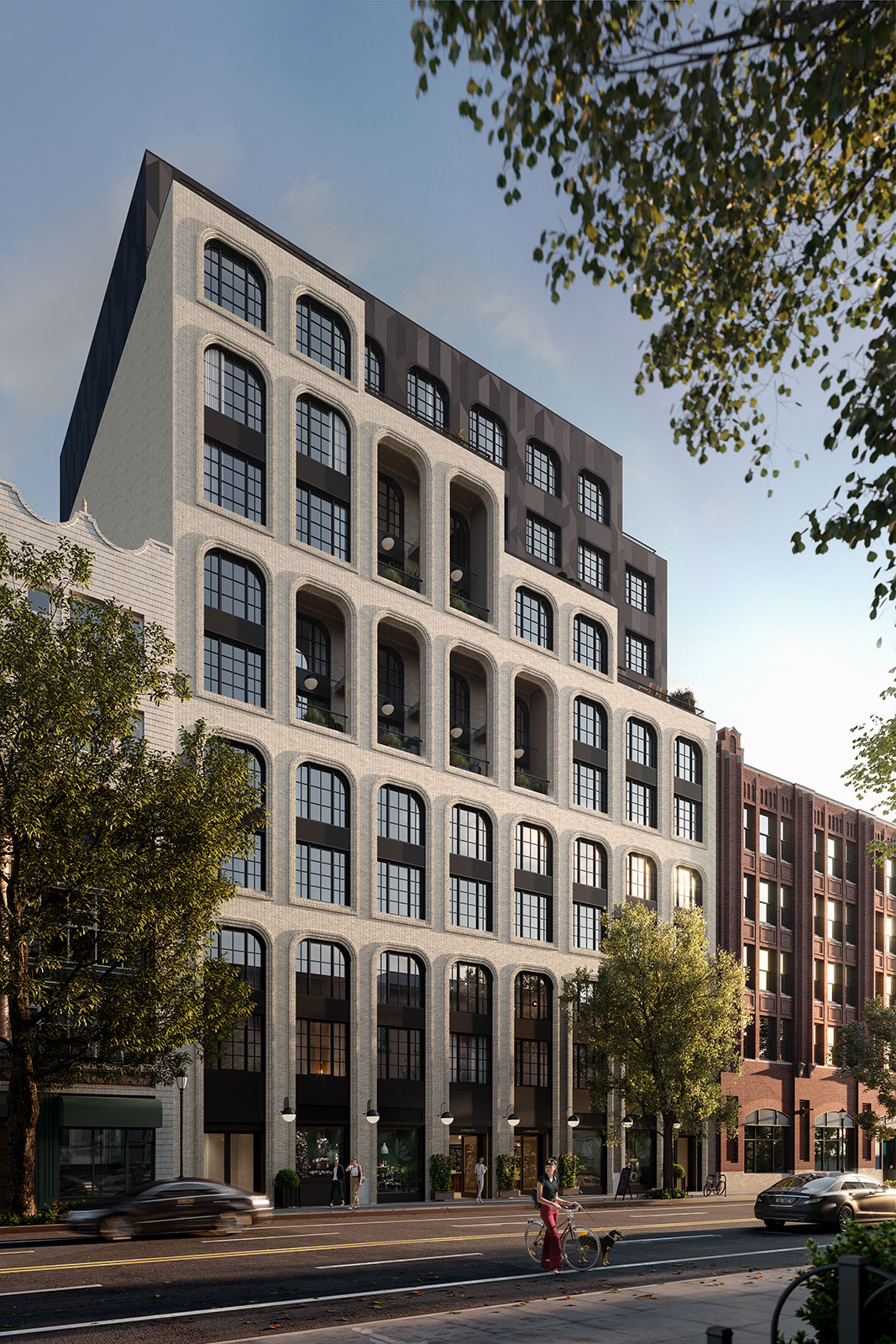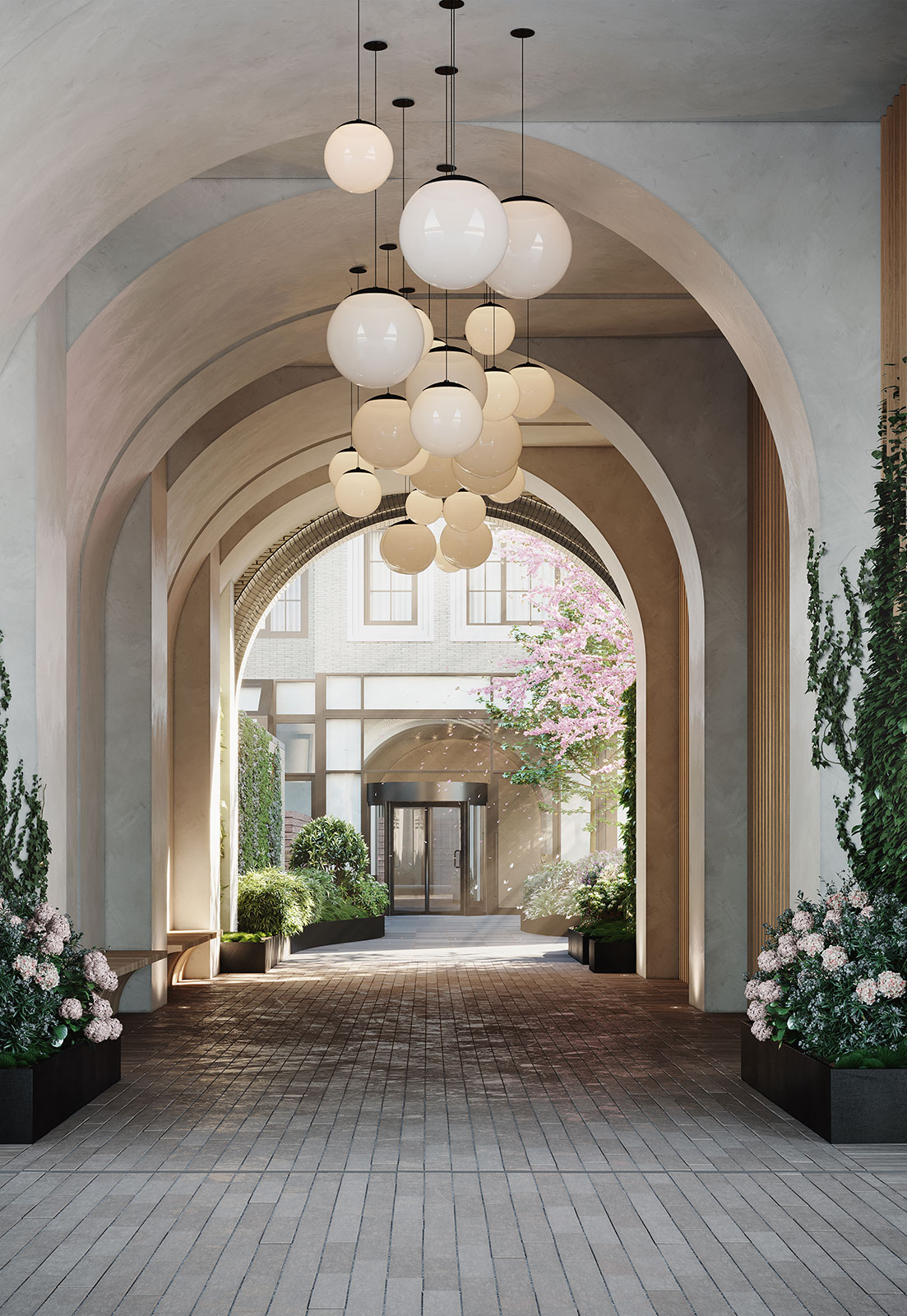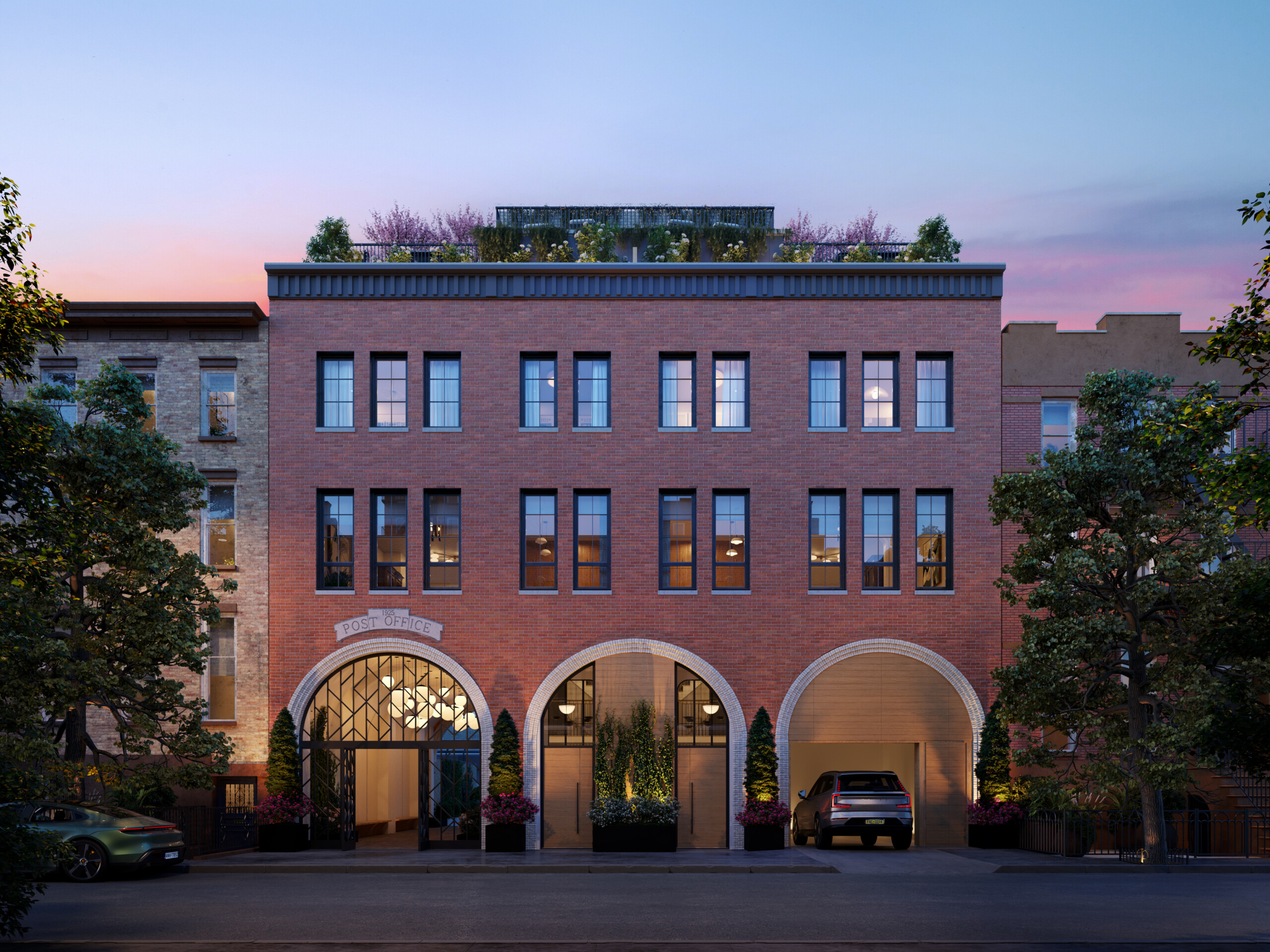
NY Build 2023: Jonah Kaplan on Cutting Edge Urban Design
How do we define cutting edge urban architecture and design at Workshop/APD? This past March, director of business development Jonah Kaplan gave a presentation on the ways our designers approach adaptive reuse within the city of New York. Through seven different projects – some new and some long completed – we can see common threads that form the Workshop/APD philosophy on urban architecture.
Building 92 at Brooklyn Navy Yard
In one of our earliest New York projects, Workshop/APD was tasked with the adaptive reuse of the old Navy Yard building along the East River in Brooklyn. Historic Building 92 was slated to become a museum and educational center honoring the site’s shipbuilding history. As a tribute to the ships themselves, our team designed a perforated metal screen that displays an abstracted image of a ship, though its utility is twofold. By reducing the solar heat gain through the building’s south-facing windows, the building’s façade screen contributed to its LEED Platinum certification. The former admiral’s house, now restored and expanded, was designed to house more programs, classrooms, and office space.
The Printing House
This project, as its name suggests, was originally a printing facility that later became a series of cramped (and illegal) rental apartments. Workshop/APD was engaged to combine many of the smaller units into fewer, more spacious luxury condos. As our team chipped away at the storied building’s interiors, they discovered a beautiful green Gustavino tile ceiling in the lobby. A pleasant surprise, the team determined to change the initial design scheme to honor and enhance the original ceilings.
Outside of the Printing House, a dead zone that once comprised the back alleyway became a mews full of greenery – a pedestrian thoroughfare designed to engender community. Transforming an alleyway into an amenity was Workshop/APD’s way of taking an existing urban element and bringing it to life.
88&90 Lexington Ave
Workshop/APD transformed these neighboring pre-war & post-war office buildings into a unified luxury condo building through a contextual, place-based approach to urban design. Unifying the exteriors of the two buildings, we see history and modernity come together seamlessly. We restored the original limestone façade of the pre-war building and replaced the façade of the post-war building – using the same limestone as its neighboring sister – which will age & patina over time to match. Inside, we also combined the interiors, devising a double-height lobby and stylish amenity spaces.
111 Leroy Street
A modern riff on the historic streetscape of the West Village, 111 Leroy Street’s townhomes take their cues from the area’s varied historic townhome facades. Each façade is unique in its red brick’s stepped pattern, but all share a commonality of material. Meanwhile the tower takes its inspiration from historic factories, with large windows cut into a stone façade.

Upper West Side Townhouse
Despite its contemporary appearance, this renovated townhome in the Upper West Side blends cohesively into the streetscape. The modern slatted façade takes color cues from the buildings on either side. Rather than leaving the all-glass face exposed, we floated terra cotta fins in front to complement the red brick neighbors and provide shade and privacy screening for the inhabitants..
Fashion Atelier Headquarters
Working to meet Landmarks Preservation Commission and Department of Buildings requirements while providing our clients with a striking modern structure, we designed a new rooftop addition in SoHo that would avoid all sightline issues from the street. Our team spent hours on the street in SoHo documenting sightlines to prove that the structure was invisible at street level, allowing us to maintain the integrity of the neighborhood’s historic attributes while creating a modern, glass-and-steel work and gathering space.
Post House
A contextual adaptive reuse at Post House Brooklyn took the story of the historic structure – a post office – to inspire the new design. On Pacific Street, the building’s facade incorporates arched details similar to that of the post office’s entryway, imbuing the building with a welcoming spirit. On the Atlantic Avenue side, three conjoined townhouses use a similar language, mimicking the rows of townhomes in Boerum Hill’s characteristic streetscapes. Between the two sides, a shared courtyard space allows room for community interaction.
